JF Ptak Science Books Post 2122
![]()
I imagine that tree wagons had been around for quite some time by the time this Daguerreotype was made ca. 1860--the very unusual aspect of this is that it must be a very very early photograph of the process. And, actually, it is probably rare among images in general to see the transportation of a mature tree--frankly I think it is a very mature tree in spite of its height (is this the slow-growing American Hemlock?), mainly because the trunk seems to be as thick as the observer at right. The tree and roots look to be suspended in a wooden container, and the wheels look thick and tall (at least 5' and probably more)--it no doubt was a very heavy load, and it would be interesting to know what was going to pull it along that open field.
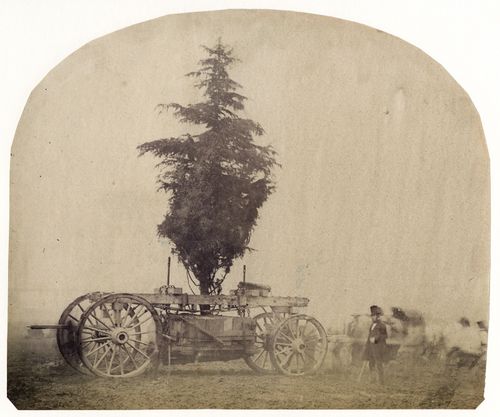 Image: http://www.retronaut.com/2013/04/moving-a-tree-on-a-wagon/
Image: http://www.retronaut.com/2013/04/moving-a-tree-on-a-wagon/
The tree wagon was animal-powered--the rolling thunder land car was powered by steam.
Julius Griffith1 occupied a very important spot in the history of machine land transport--in essence, an early rail-less locomotive a car. There were engineers earlier ont he scene--perhaps none earlier or more famous/infamous than Philadelphian Oliver Evans, who was a sort of under-appreciated and developing Robert Goddard (derided as the "Moon Man") in respect to his ideas of animal-less locomotion. Evans was a superb engineer, and had some great ideas and plans for a steam-driven carriage, but he was seen as, well, crazy for believing so and presenting a patent for his invention. He also had a problem with funding, and was generally followed by questions and pilloried for his efforts.
Trevithick (1803), Brunton (1813), and Tudal (1814) and a few others brought effort and design and engineering to the problem, but it seems as though Griffith made some important improvements and regulations in his steam car, leaving behind the earliest efforts of land loco dependent upon wind, or human-power, or cranks, or ratchet wheels, and so on.
And of course the tree wagon bears a fair likeness to the Griffith steam vehicle.
Notes
1. "To Julius Griffith, of Brompton Crescent, in the county of Middlesex, Esq. for certain improvement in steam-carriages, and which steam-carriages are capable of transporting merchandise of all kinds as well as passengers upon common roads without the aid of horses being communications by foreigners and discoveries by himself.'
"Since these changes in our roads were effected, the name of Julius Griffith, of Brompton Crescent, stands the foremost in prosecuting the object. His patent is dated in December, 1821, and the specification informs us that it was partly communicated by foreigners..."--Engineers and Mechanics Encyclopedia 1839: Railways:v [Source: Graces here]
http://www.gracesguide.co.uk/Engineers_and_Mechanics_Encyclopedia_1839:_Railways:_Julius_Griffith


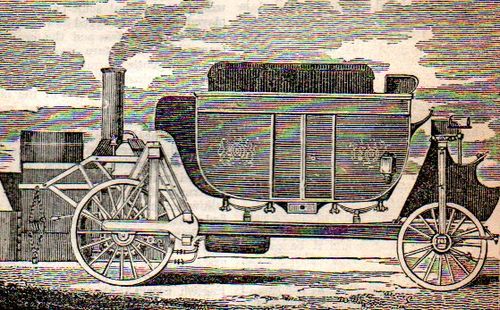
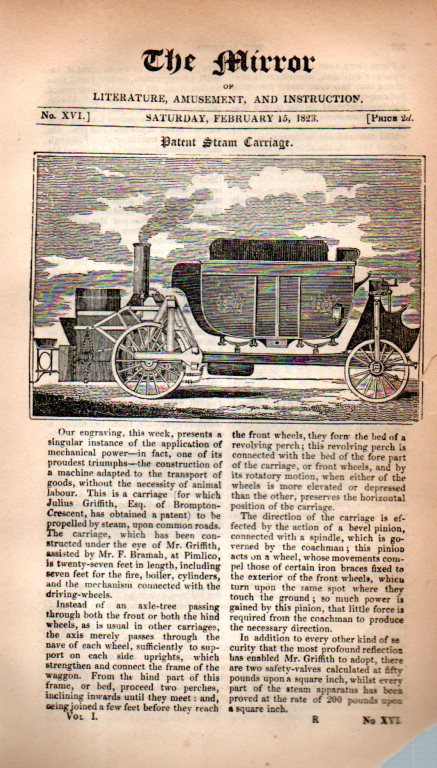
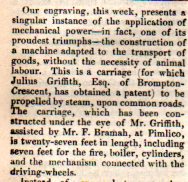
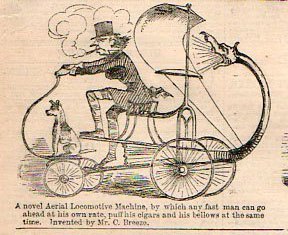

Comments